This article was first published in Natural Awakenings, Atlanta (January 2019)
Decorating is one of my favorite holiday traditions. The annual unpacking of ornaments and accessories is my own personal Christmas, unwrapping the joys of holiday treasures collected, gifted and inherited. The fresh pine scent of the tree waves through the air, its branches trimmed in decades of memories and a lifetime of love. Softly lit adornments glimmer with warmth and hope throughout our home, the tree’s radiant glow filling the darker recesses of the room. Perhaps unabridged beauty or simply nostalgia inspires my sense of pure joy, but there is a quality to the holiday scene that renews my spirit of peace.
As much as I treasure the heartwarming, picturesque backdrop of the holidays, do you know what I enjoy more? Putting it all away. You read that right. Cleanliness soothes my soul. Holiday un-decorating in my house always includes a spring-cleaning of sorts: top-to-bottom dusting, scrubbing, mopping. Similar to the meditative mood I feel from the sights and sounds of the holiday, an orderly space brings me greater ease. My home, like my body and mind, are containers through which my life is expressed and experienced, and all operate more efficiently and effortlessly when they are well-kept. While house cleaning requires any number of tools depending on the task at hand, my primary mechanism for decluttering the inner house of my mind is yoga.
By definition, yoga is the cessation of the turnings of thought (citta-vritti-nirodha) and by its very nature, yoga provides the tools for cleansing the mirrors of our minds. Patanjali’s Yoga Sutras, one of yoga’s most well-known texts, proffers eight limbs, or practices, that lay out a path to peace. One practice is asana, or yoga posture, which is defined as “steadiness and comfort.” At the level of the physical practice, yoga postures should offer a sense of confidence, balance, ease. This is not to say a posture fails to challenge us; it is to say each personality (and all the components that contribute to one’s personality) experiences the posture in a unique way; where a handstand may be a challenge for one student, corpse pose may be an edge for an- other. Many years ago a student approached me after class and said, “ You know, I get really angry with you when you lead Bound Angle (Cobbler) pose.” To that I simply smiled and offered, “It sounds like that posture has something to teach you.”
The teacher in me could give this answer because the student in me had been mopped up by more than a few yoga postures over the years. Each time I learned where I had tendencies to harden, tighten around, resist and push against my experiences. I learned how to watch. To pause and to stay. Over the years the shapes, their mutability and teachings led me to under- stand that yoga is not about the pose; it’s what happens inside the pose. The yogi does not attain enlightenment by coming into the deepest backbend. We become enlightened each moment we deepen into the experience of the backbend (or whatever shape it is).
Humans are a complex web of thoughts, emotions, and beliefs that are based on past experiences and which inform future ones. In yogic terms, these experiences come from the ahamkara (ego mind), that aspect of us shaped by the sensations, thoughts, and emotions that validate (or threaten) who we believe we are. The yoga posture itself requires various muscle actions (contraction or lengthening), all of which create physical sensations. These impressions pass through our sensory experience and the (ego) mind extrapolates meaning, which is ex- pressed through language (thoughts) and inevitably how we respond. In this way, asana be- comes the container through which we learn about our patterns of thinking and being.
As a yoga practitioner, I will be the first to tell you that yoga is not always fun and bliss. Neither is scrubbing baseboards and washing walls. Winter-spring cleaning and routine upkeep may be easier than maintaining dust-free corners in my mind, nevertheless both take commitment and effort. Similar to carrying out routine chores to maintain a semblance of sanity at home, yoga requires consistent practice in order to purify the mind. While just one of the eight limbs of yoga, asana is the package and when we unpack the contents we receive the gift of self-awareness.
© Tra Kirkpatrick, January 2019
This article was first published in Natural Awakenings, Atlanta (January 2019)
Decorating is one of my favorite holiday traditions. The annual unpacking of ornaments and accessories is my own personal Christmas, unwrapping the joys of holiday treasures collected, gifted and inherited. The fresh pine scent of the tree waves through the air, its branches trimmed in decades of memories and a lifetime of love. Softly lit adornments glimmer with warmth and hope throughout our home, the tree’s radiant glow filling the darker recesses of the room. Perhaps unabridged beauty or simply nostalgia inspires my sense of pure joy, but there is a quality to the holiday scene that renews my spirit of peace.
As much as I treasure the heartwarming, picturesque backdrop of the holidays, do you know what I enjoy more? Putting it all away. You read that right. Cleanliness soothes my soul. Holiday un-decorating in my house always includes a spring-cleaning of sorts: top-to-bottom dusting, scrubbing, mopping. Similar to the meditative mood I feel from the sights and sounds of the holiday, an orderly space brings me greater ease. My home, like my body and mind, are containers through which my life is expressed and experienced, and all operate more efficiently and effortlessly when they are well-kept. While house cleaning requires any number of tools depending on the task at hand, my primary mechanism for decluttering the inner house of my mind is yoga.
By definition, yoga is the cessation of the turnings of thought (citta-vritti-nirodha) and by its very nature, yoga provides the tools for cleansing the mirrors of our minds. Patanjali’s Yoga Sutras, one of yoga’s most well-known texts, proffers eight limbs, or practices, that lay out a path to peace. One practice is asana, or yoga posture, which is defined as “steadiness and comfort.” At the level of the physical practice, yoga postures should offer a sense of confidence, balance, ease. This is not to say a posture fails to challenge us; it is to say each personality (and all the components that contribute to one’s personality) experiences the posture in a unique way; where a handstand may be a challenge for one student, corpse pose may be an edge for an- other. Many years ago a student approached me after class and said, “ You know, I get really angry with you when you lead Bound Angle (Cobbler) pose.” To that I simply smiled and offered, “It sounds like that posture has something to teach you.”
The teacher in me could give this answer because the student in me had been mopped up by more than a few yoga postures over the years. Each time I learned where I had tendencies to harden, tighten around, resist and push against my experiences. I learned how to watch. To pause and to stay. Over the years the shapes, their mutability and teachings led me to under- stand that yoga is not about the pose; it’s what happens inside the pose. The yogi does not attain enlightenment by coming into the deepest backbend. We become enlightened each moment we deepen into the experience of the backbend (or whatever shape it is).
Humans are a complex web of thoughts, emotions, and beliefs that are based on past experiences and which inform future ones. In yogic terms, these experiences come from the ahamkara (ego mind), that aspect of us shaped by the sensations, thoughts, and emotions that validate (or threaten) who we believe we are. The yoga posture itself requires various muscle actions (contraction or lengthening), all of which create physical sensations. These impressions pass through our sensory experience and the (ego) mind extrapolates meaning, which is ex- pressed through language (thoughts) and inevitably how we respond. In this way, asana be- comes the container through which we learn about our patterns of thinking and being.
As a yoga practitioner, I will be the first to tell you that yoga is not always fun and bliss. Neither is scrubbing baseboards and washing walls. Winter-spring cleaning and routine upkeep may be easier than maintaining dust-free corners in my mind, nevertheless both take commitment and effort. Similar to carrying out routine chores to maintain a semblance of sanity at home, yoga requires consistent practice in order to purify the mind. While just one of the eight limbs of yoga, asana is the package and when we unpack the contents we receive the gift of self-awareness.
© Tra Kirkpatrick, January 2019





